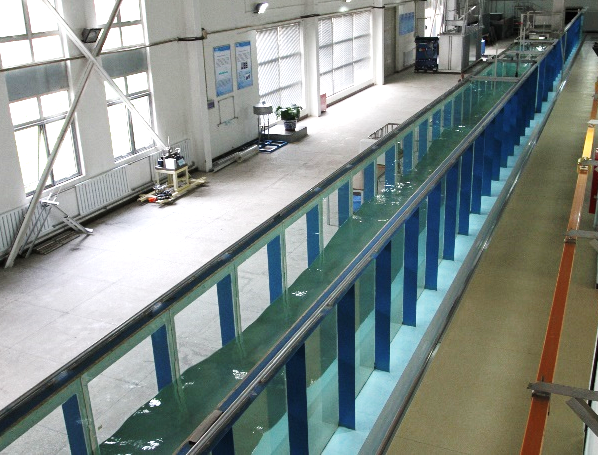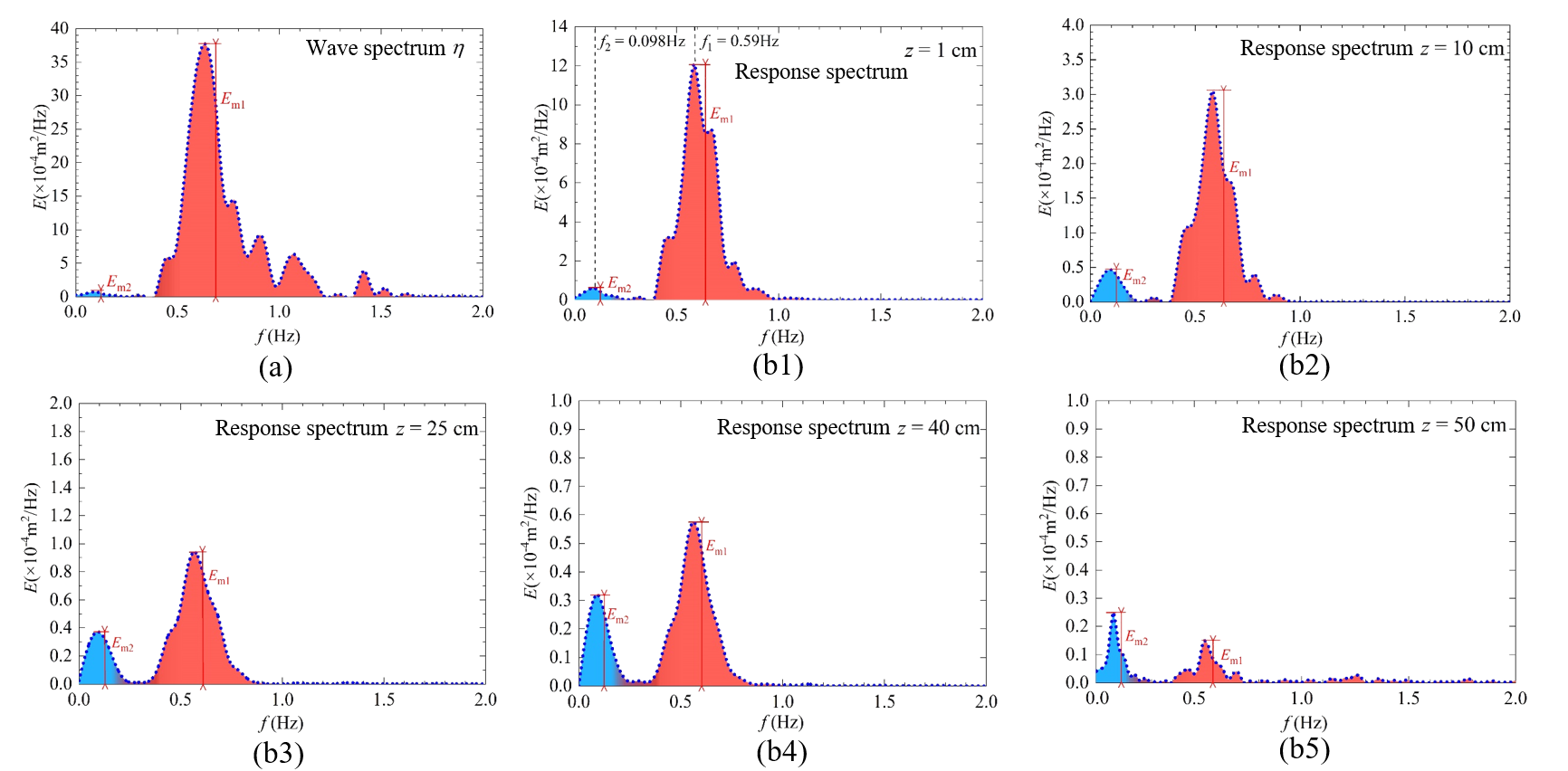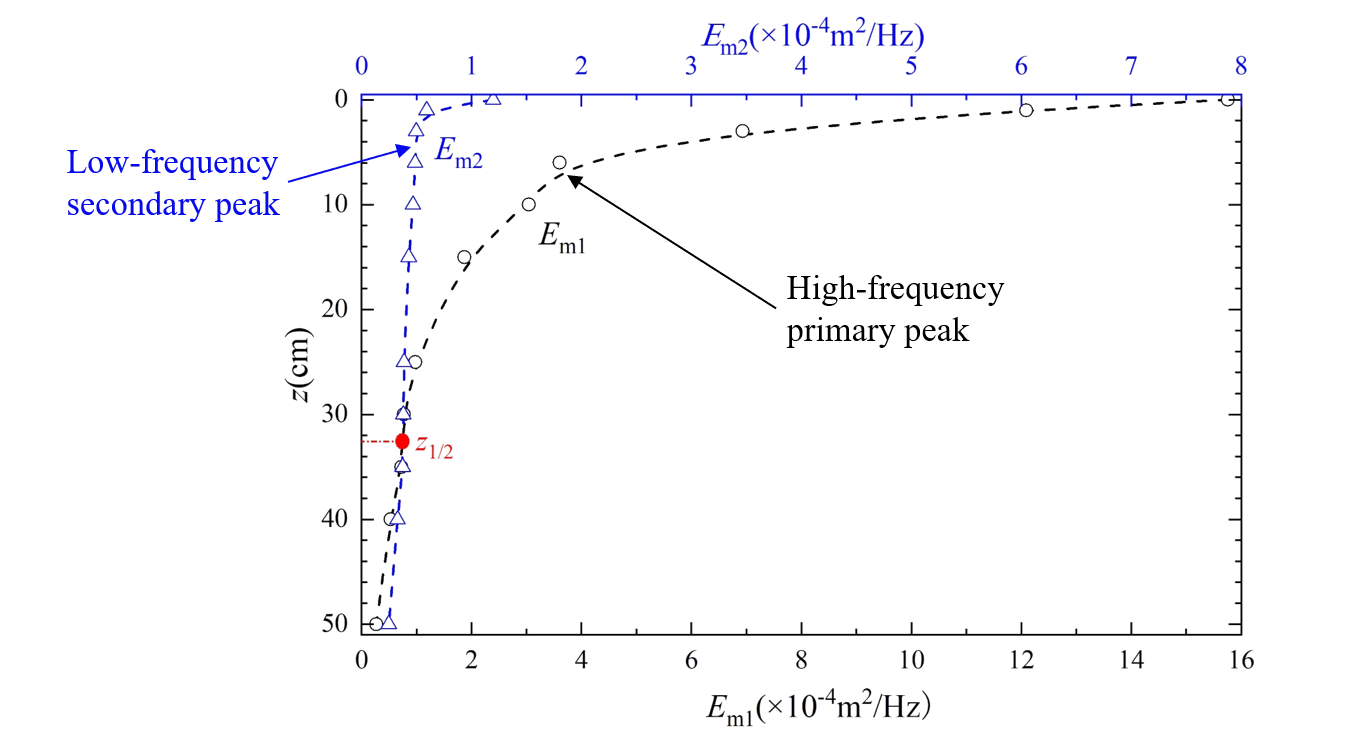In natural oceans, waves are influenced by nonlinear factors such as resonance excitation, white-capping and group-bounding; as a result, the low-frequency peaks are commonly included in the wave spectra. In the present physical modeling, the low-frequency peaks in the narrow-banded dual-peaked spectra were inferred to represent infragravity waves, which mainly originate from the radiation stress induced by second-order Stokes interactions (see Fig. 3). The response spectra are obtained for random-wave induced transient pore-pressures by employing Fourier analysis (see Fig. 4). The evolution of the narrow-banded dual-peaked spectra along soil depth in the seabed is featured with the frequency-filtering effect (see Fig. 5): the primary spectral peak with high frequency attenuates more rapidly along the soil depth than the secondary spectral peak with low frequency; consequently, the secondary spectral peak would gradually surpass the primary spectral peak with the increasing soil depth. This also accounts for the fact that the pore pressure induced by long-wave components is of vital significance in deeper layers. To quantitatively characterize the evolution of response spectra for transient pore-pressure along the soil depth, a dimensionless filtering-depth parameter is further introduced. In the engineering practices, if random-waves are characterized by monochromatic regular-waves with significant wave parameters, traditional time-domain predictions may significantly underestimate the magnitude of transient pore pressures, particularly within deeper soil layers. Via the perspective of spectral analysis, the proposed filtering-depth and its influential factors may provide a quantitative characterization of such frequency-filtering effect, especially when predicting the liquefied soil depth under random waves.
This work was supported by the National Science Fund for Distinguished Young Scholars (No. 11825205). The research results were published in Ocean Engineering, 2023, 279: 114490. The first author, Jiahao Yu, is a Ph.D. candidate at the Institute of Mechanics, Chinese Academy of Sciences, who completed his undergraduate studies at the School of Engineering Science, University of Chinese Academy of Sciences.

Fig. 1. The large-scale flume for modeling fluid-structure-soil interactions at Institute of Mechanics.


Fig. 2. (a) Time series of the free surface elevations and excess pore pressures under random waves; (b) Comparisons between experimental data and analytical predictions of both random and regular wave-induced pore-pressure amplitude at various soil depths.

Fig. 3. The low-frequency secondary peak in the random-wave spectrum.

Fig. 4. (a) Typical frequency spectrum of the random-waves with JONSWAP spectrum; (b) Response spectra for random-wave induced pore pressures at various soil depths.

Fig. 5 Frequency-filtering effect: vertical distributions of the primary peak (Em1) and the secondary peak (Em2) along the soil depth.